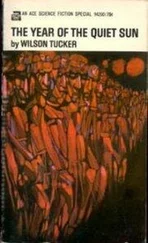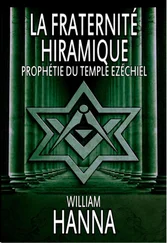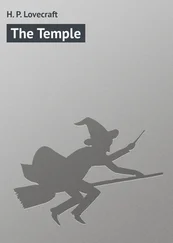‘Right, baba. I’m off. Come and see me soon with your mother, or with Sanyogita. Welcome back.’ With this she was gone, leaving a trail of tuberose perfume behind her.
I wandered about my mother’s flat for under an hour. Its familiarity, its inevitability, far from comforting me, oppressed me, seeming to force our old association. It made my few foreign possessions – a red Old Spice deodorant stick, an electric toothbrush, a Lush soap – appear out of place, as though I’d brought unwelcome friends to dinner. ‘It is my mother. This flat is my mother,’ I said, almost aloud. ‘I’ll have to scrape her off the walls if I’m to live here.’ And so, just hours after I arrived, I escaped the flat for Sanyogita’s.
The hot months before summer were months of flowering trees in Delhi. The silk cotton, a stony, shadeless tree, was among the first to bloom. I passed one on the way to Sanyogita’s flat. Its fleshy coral flowers had appeared like women’s brooches on its thorn-covered branches. Though I could have gone through Lodhi Gardens, I chose instead to take Amrita Shergill Marg, a laburnum-lined crescent that ran along one boundary of the park, connecting my flat with Sanyogita’s.
The storm I thought I had seen from the plane turned out to be only a wind. It tore through the city that morning. Many of the trees were losing their leaves even as new ones grew. The wind swept away their old leaves, littering the streets with an autumnal scene. Bees and ladybirds crawled through the debris. The leaves that remained, though new, were in some trees brown before they were green. So it seemed like spring and autumn had come together in one afternoon.
The quiet on Amrita Shergill Marg was broken at even intervals by the tinkle of a cycle bell and the wail of a man in a lilac shirt collecting junk from house to house. At the end of Amrita Shergill Marg was a busy main road. Black and yellow taxis, now with green stripes across their flank that read CNG, rumbled past, their colours clashing with the black and yellow of the lane divider. Everything beyond was the post-independence Delhi of colonies; Jorbagh was among the first of these.
I entered through a tall iron gate and walked past low white houses with clean simple lines and small lawns. On my right, there was a narrow lane under a dense arbour. The cool and shadows of that lane had transfixed me as a child. I used to come here with my mother in our green Suzuki. Halfway down it was Chocolate Wheel, where a jovial woman sold bread and fudge brownies. Ahead was the Jorbagh florist, still selling yellow gladioli. The pan shop. The Jorbagh colony market.
Sanyogita’s flat was on one corner of a U-shaped garden with houses on three sides. Her building was white with a narrow plaster screen built into its façade. It ran down the building’s entire length and a pink bougainvillea hung like a hive from its floral hollows. Outside there was a single dark mango tree with long twisting leaves and greenish-yellow flowers. I saw Sanyogita on her balcony watering plants. She hadn’t grown up in Delhi; she was from Bombay. And to see her in so distinct a Delhi scene, I felt the special joy people feel for the migrant who masters their ways. Sanyogita, as if aware of her triumph, blushed when she realized that I was standing below.
The white marble stairs were dim and dirty. A green stone skirting followed them up to Sanyogita’s flat; blue and red wires swelled out of an electricity box; the banister shuddered.
Sanyogita had planned a surprise. I saw her, with her back against the door, as soon as I reached the top of the stairs. She wore tattered tracksuit bottoms and a faded T-shirt. Her wavy black hair was twined into a rope and pulled forward.
‘Baby,’ she breathed.
She was large and shy and beautiful. That’s not to say she was fat, she wasn’t; but there was a prominence about her bones and joints, and a softness in her limbs and breasts. When she hugged you, you could feel her architecture. She had broken her thigh bone as a child, skiing in Kashmir. A man had crashed into her, leaving her crumpled in the snow. She had a scar from where they put pins into her leg. It was a great smooth-backed caterpillar crawling over her pelvic bone. Which itself was so prominent, and strong, that whenever I saw the scar I felt the force of the collision.
The flat inside, almost as if the squalor of the staircase were a deliberate part of the aesthetic, was a sanctuary. Its high ceilings, its rooms overlooking a secluded balcony, its shade and screens of twisted matting hanging like wet tobacco in front of the windows, faintly scented and cool, were like a preparation for summer. Though much of the flat was still empty, an entire wall of white shelves had been filled with colourful paperbacks. Seagrass carpets and runners with dark blue borders had taken their places in the bare rooms and corridors. So even empty, the flat seemed ready to be lived in.
Sanyogita led me by the hand down one of these shaded corridors. Past black metal grilles, I could see a small terrace with vine roses, potted frangipani and giant yellow and maroon dahlias. We came to a brightly polished double door with an old-fashioned bolt and a brass Godrej lock. Sanyogita took out a key she had kept pressed in her hand. It went loosely in and the lock fell open. We entered a long narrow room, the most furnished I had seen so far. It had a thin red rug, a black wood and cane chair and a maroon leather-topped desk with a green banker’s lamp on the far end. A window on one side overlooked the garden terrace. Sanyogita, standing on the balls of her feet, watched me take in the room.
On a wall covered with bare white shelves, one shelf contained new books. There was a dictionary of Islam, something called Infidels by a Cambridge professor and bathroom books: Oscar Wilde’s epigrams, a Second World War American soldier’s pocket guide to France, Elements of Style . On the desk’s maroon surface, marching along its gold border, was a family of blue and white porcelain elephants. I picked one up.
‘Be careful, baby,’ Sanyogita squealed on his behalf. ‘He’s the smallest!’
I sat down at the desk, slowly comprehending the surprise. Sanyogita watched with tense delight. At length I opened one of the desk’s drawers. The lamplight obliquely struck a neat pile of letterheads and envelopes. They were held in place by a paper band that read: ‘Alastair Lockhart. Fine writing papers, etc., Walton Street, London SW3’. And on the thick cream-coloured paper, under a faintly raised margin, it said Aatish Taseer in burnt red letters.
‘Baby, a present for your book,’ Sanyogita said, slipping her hand over my collarbone.
The room was the surprise.
She didn’t have one to spare; she had writing ambitions of her own; and though her flat was barely ready, she had made me a present of a study. I was speechless; it was the nicest thing anyone had ever done for me.
Sanyogita’s face shone with my delight. She became organizational: ‘Vatsala could make you coffee. I’ve just bought her one of those Italian things.’
‘Who’s Vatsala?’ I asked, trying to recover myself.
Sanyogita’s eyes brightened. ‘Vatsala, baby, the little goblin who brought me up?’ She stuck out her teeth and flared her eyes.
Vatsala Bai! I did remember her: she was a devious little widow in white who had moved with Sanyogita to Delhi. Her family had been with Sanyogita’s for centuries. She was devoted to her and suspicious of me, always taking every opportunity to remind me of how old and grand Sanyogita’s family was. We stayed in the room a few minutes more, then Sanyogita locked it and pressed the brass key into my hand with a kiss.
The flat, but for one small terrace and drawing room, had its back to the park. The bedroom was still bare, but for a low bed. Cane blinds shut the room off from the terrace and a modern steel light, with a salon drier head, drooped over the bed like a flower.
Читать дальше












